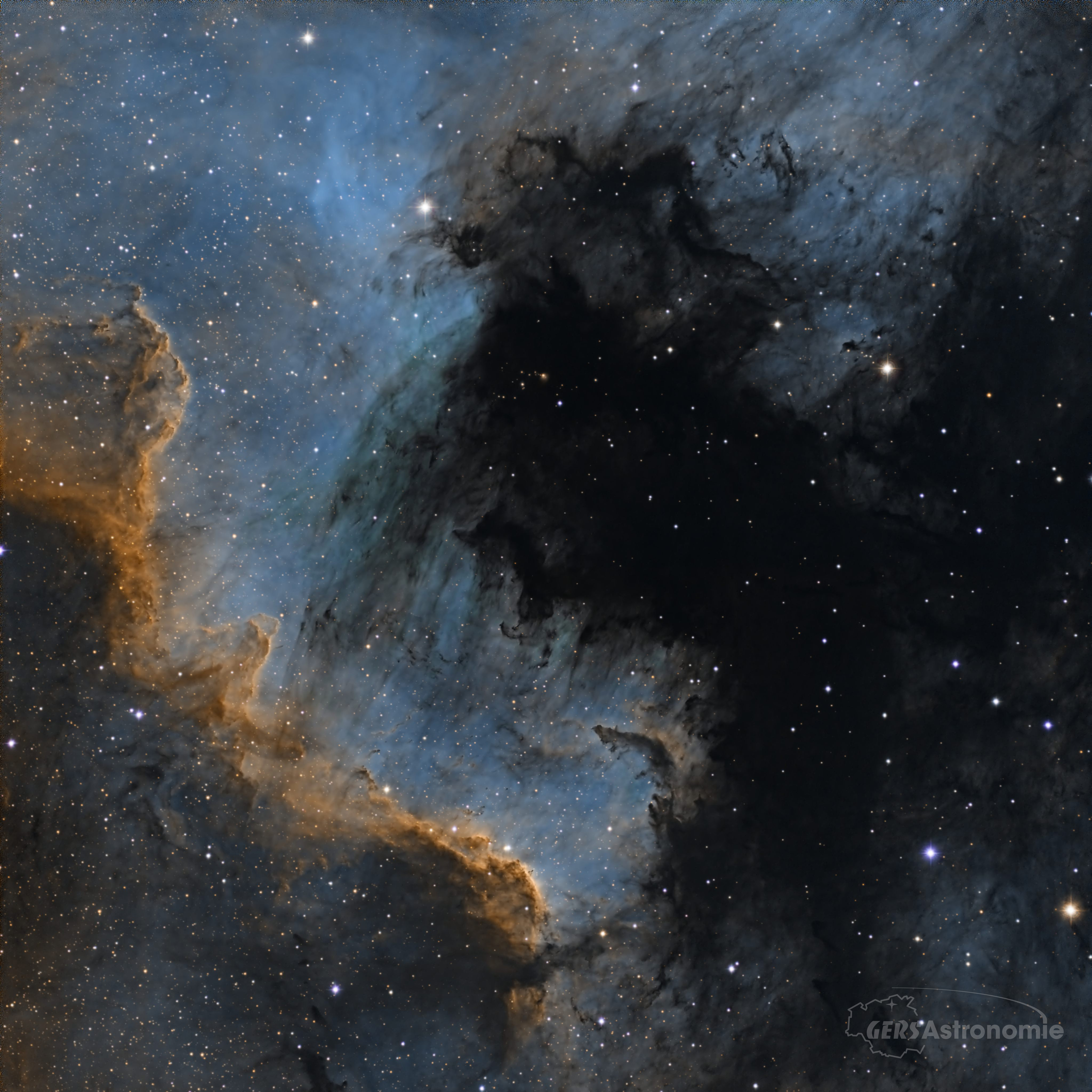This image is part of a huge area of nebulosity called the North American Nebula, as it's shape resembles that continent. In fact the nebulosity is even bigger than it seems since the adjacent Pelican Nebula is part of the same object, though separated by a dark band of dust. The nebula is much too large to fit into the field of view of my camera so here I've chosen to image a part which corresponds to the "Gulf of Mexico" (which is part of the dust cloud) and "Central America". This part is called the Cygnus Wall.
The characteristic shape of this large nebula, only partially visible in this image, was first noticed by the early astrophotographer Max Wolf in 1890, and it was he who christened it the North American Nebula. It had first been seen by William Herschel (24 Oct 1786), and 44 years later, in 1829, his son John Herschel entered it as item 7000 in his New General Catalogue.
About a century later, Stewart Sharpless, who was studying photographic plates from the Palomar Sky Survey (covering the whole sky down to declination -30°), realised that the North American nebula and the adjacent Pelican nebula are, in fact, the same object, apparently divided by an intervening patch of dark dust. This dark dust lane was later classified as L935 in the catalogue of dark nebulae compiled by Beverly Lynds. Modern radio and infra-red telescopes can see through the dust and confirm that continuity of the nebula.
The distance to the whole nebula was determined in 2020 using astrometry data from ESA's Gaia spacecraft, at 2590 light years and the ensemble, including the Pelican Nebula, is about 140 light years across. To ionise the gases of the nebula such that they emit light requires a strong ultra-violet source, a hot star of more than 30,000K (compared to our sun's surface temperature of 6,000K). No suitably hot star is visible in the area, but infrared observations have established that the star energising the entire nebula complex is hidden behind the dark dust lane, though it is dimly visible in this image: it is about 70% of the way [up] from the [bottom] edge, and about 10% in from the [left] edge, the next-but-one closest to the brightest star in that region. Were it not for the intervening dust, this star would shine as bright as Allbireo, the brilliant double star at the head of the constellation Cygnus.
I've reworked this image because, at the time I processed it, I was suffering from eye problems. Since this was fixed I have realised that most of my processed images from the relevant period are no good. I have reworked this one from the combined masters.


